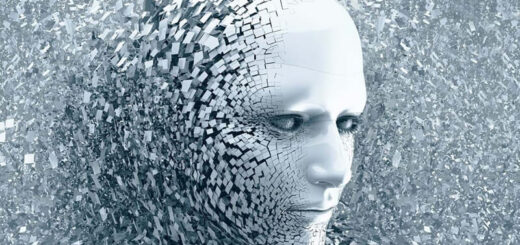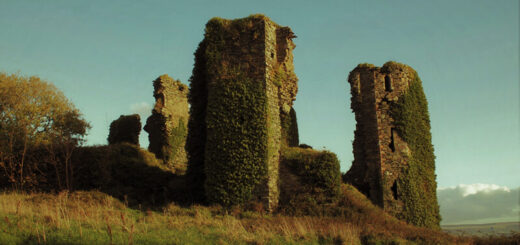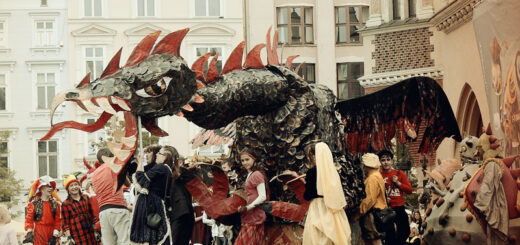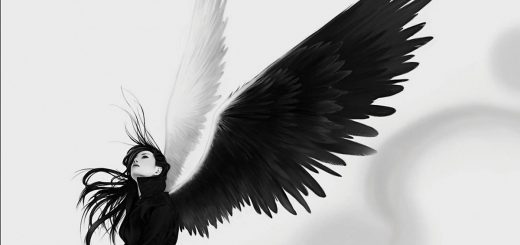Dokkaebi, the Goblins of Korean Folklore
In Korean art and folklore, Dokkaebi are mythical goblins known for their peculiar appearances and supernatural abilities. They are often depicted as humanoid beings with the ability to transform into various forms and possess extraordinary skills. Dokkaebi are considered symbols of exorcism and are believed to ward off evil spirits. While they share some similarities with the Japanese Oni, they are distinct entities, and there are also references to these entities in ancient China.
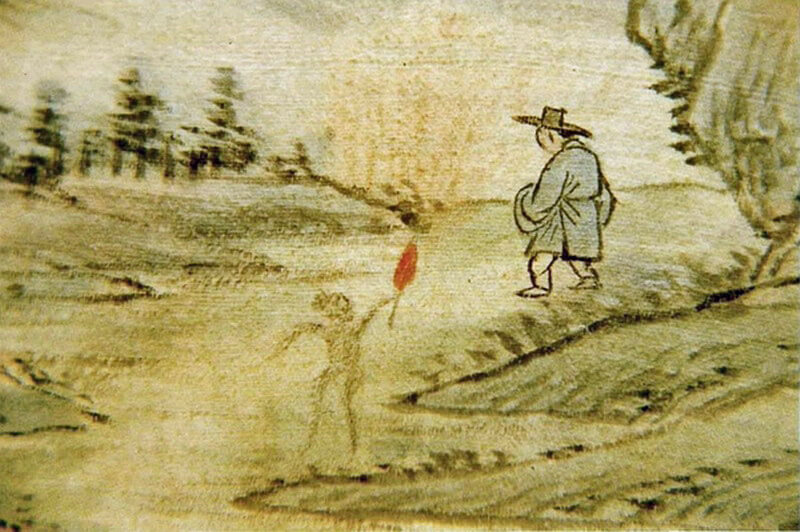
Characteristics
Dokkaebi take on human-like forms but are not truly human; they are fantastical beings of imagination. Rather than referring to a specific entity, the term Dokkaebi is used to encompass various creatures with similar characteristics.
The physical appearance varies across different accounts and records. In general, traditionally they are depicted wearing hanbok, a traditional Korean attire, and a tall hat with a brim.
During the Joseon Dynasty, a variety, known as Dueokshini are mentioned in many cases where they appeared in the form of young children. (The Joseon Dynasty, also known as the Joseon Kingdom or Chosŏn Dynasty, was a Korean dynasty that lasted from 1392 to 1897. It was founded by King Taejo Yi Seong-gye.)
Many of these goblins claim their family name is Kim (金). Contrary to their reputation as ghosts or monsters, they are known to be mischievous but generally kind-hearted. They enjoy playing, socializing, and forming friendships.
However, they can become angry when teased or bullied, and they value their dignity. They can also be jealous and prone to fits of temper.
Dokkaebi have a fondness for activities such as storytelling, singing, and enjoying delicacies like memilmuk (buckwheat jelly) and makgeolli (traditional rice wine).
They also like wrestling, and have a propensity for challenging passersby to wrestling matches, often calling out travelers on remote mountains or near old abandoned houses.
Dislike of blood
 Dokkaebi are sometimes wrongly associated with vampires and a love for items stained with human blood. This is probably due to wrong translations. In fact they abhor blood. They have an aversion to the color red and are said to be repelled by items such as red beans and blood.
Dokkaebi are sometimes wrongly associated with vampires and a love for items stained with human blood. This is probably due to wrong translations. In fact they abhor blood. They have an aversion to the color red and are said to be repelled by items such as red beans and blood.
This is evident in one particular tale that recounts the story of an elderly man who resided alone atop a mountain. One fateful day, a Dokkaebi paid him an unexpected visit.
Startled yet kind-hearted, the old man offered the Dokkaebi a drink, and thus began an unlikely friendship. He then frequented the man’s abode, and together they engaged in lengthy conversations.
However, on a solitary stroll through the woods near the river, the man beheld his own reflection, which inexplicably bore resemblance to that of the Dokkaebi. Fear gripped him as he realized he was slowly transforming into the creature.
Determined to thwart his ominous fate, the man devised a plan and invited the creature to his dwelling. With a tremor in his voice, he posed the question, “What is your greatest fear?” The Dokkaebi replied, “I fear the sight of blood. And what about you?”
Seizing the moment, the man feigned trepidation and confessed, “I am afraid of wealth. Hence, I dwell in isolation amidst these mountains.”
The following day, the old man slaughtered a cow, drenching his house in its blood. Overwhelmed with shock and fury, the Dokkaebi swiftly fled, vowing, “I shall return bearing your deepest dread!” True to its word, the Dokkaebi returned the next day, laden with bags overflowing with money, showering the old man with newfound riches.
From that day forth, the Dokkaebi never reappeared, and the once solitary old man became the wealthiest individual in the entire town.
Origin and Manifestation
According to legend, Dokkaebi are said to emerge from old brooms, broken bowls, straw shoes, and other aged objects. Many ancient texts and folktales attribute the birth of these spirits to old and worn-out items. One popular story states, “When a wrestling match was won by a Dokkaebi, upon returning to the place where the match took place, a broom or a broken bowl was found.”
It is more accurate to say that they are born spontaneously from inanimate objects rather than inheriting spirits. Therefore, Dokkaebi can manifest not only in artificial objects but also in natural ones.

Special features
Dokkaebi, much like other spirit beings, are associated with ghost fires or will-o’-the-wisps. The Dokkaebi fire manifests as a shimmering light or tall blue flames, serving as a sign of its presence.
These goblins possess magical artifacts, including the Dokkaebi-hat known as the Dokkaebi gamtu (도깨비 감투). Wearing this hat grants the wearer the power of invisibility. Additionally, they wield the Dokkaebi magic club called the Dokkaebi bangmangi (도깨비 방망이), which can summon objects and function as a magical wand.
They have a fondness for various foods such as buckwheat jelly, sorghum, red bean rice cakes, and mashed sorghum, along with their preferred drinks. These food preferences are incorporated into Dokkaebi gosa, which is a ritual or offering ceremony associated with the Dokkaebi.
You may also like to read:


